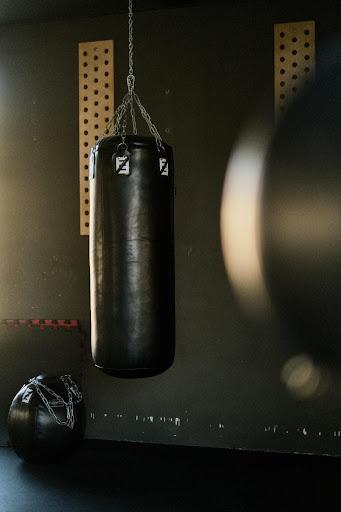

Boxing combined with weight training can help you lose up to 1,000 calories each day fast! Boxing is a demanding sport and training for it can make you achieve your fitness objectives quickly.
Saying the word ‘cardio’, refers to cardiovascular health, meaning any exercise that increases your heart rate while also stimulating metabolism. So, forms of cardio can range from swimming to cycling, running, and even boxing too.
Did you know that boxing burns more calories than any other sport? A recent Harris Poll by Forbes also showed that boxing is the fourth most popular sport in the USA. From the poll, boxing only trails football, baseball, and basketball. It is way ahead of other martial arts and combat sports.
According to the poll, more than 30% of respondents were fans of the sport. Moreover, many boxers command a substantial social media following. Think of Tyson Fury, Jake and Logan Paul, Manny Pacquiao, and Ryan Garcia.
6 Reasons To Try Boxing
Boxing improves heart health
Boxers need top-shelf strength to churn repeated bouts of high-intensity movements during workouts or in a fight. Boxing is an underrated high-intensity interval training (HIIT) that intensely works your cardiovascular system.
Moreover, HIITs are known to burn fat effectively and steeply reduce your risk of heart disease and high blood pressure. Some studies find that boxing significantly improves your heart rate and function in physical stress.
Improves weight loss
HIITs can reduce body fat and improve muscle definition much more quickly and effectively than many other activities, such as jogging or walking.
For example, a very high-intensity 1-hour workout can burn up to 800 calories. However, the caloric burn can be taken a notch higher with variation in boxing workouts, for example, whether hitting a bag or sparring.
Even if you never wish to compete in a match, participating in training programs will optimally burn calories and leave you feeling like a champ.
Enhances strength, endurance, and explosiveness
Many people associate boxing with reduced dexterity and stiffness. Well, this can’t be any further from the truth.
Boxing predominantly targets fast-twitch muscles that are good for rapid movements like jumping or sprinting, giving you a competitive edge.
Boxing requires the activation of long-chain muscles and will help you build strong core, leg, upper body and arm muscles.
Ideal for stress alleviation
Boxing and the punching bag are the ultimate stress reliever. Stress negatively impacts your cognition and mental wellness. This can cause headaches, anxiety, depression, raised blood pressure, and imbalanced hormone levels.
Many doctors, health professionals, and therapists recommend boxing to blow off steam. Physically hitting a punching bag can relieve stress and tension. It clears your mind and eases your mind off negative thoughts, making your mood more tranquil.
Improves joint structure and mobility
Cardio workouts and HIITs improve the range of motion in joints. They also strengthen muscles and ligaments, resulting in enhanced balance and coordination.
Studies find that many boxers have higher bone densities and bone strength than the average person.
Boxing trains you to stay loose and limber, always moving on your toes. While it will take a lot of conditioning for you to keep your hands up and stay moving for even a single round, the result is stronger muscles that help stabilize the joints. You will also realize increased speed and power in everyday activities.

Disadvantages of Boxing for Cardio
Many injuries are associated with boxing if you decide to spar. But just as with any other combat sport, there are many defensive and attacking techniques to learn. However, we all make mistakes, and it is common to land in trouble, especially when boxing.
So, first, it’s best to understand some of the risks associated with boxing.
Black eye
If you don’t keep moving and correctly position your gloves, bouts of punches can land where it hurts most. While bruises signify superficial injury, more damage can happen internally when you least expect it.
Although facial bones well guard the eye on either side, the front section is the most vulnerable to injury.
Bone fractures
Boxing and sparring can result in devastating trauma. Several boxers have had to throw in the towel (or worse, hang their gloves) following career-ending injuries and fractures. For example, blows to the jaw will likely lead to a jaw dislocation or fracture. Other common injuries linked with boxing are orbital fractures and nasal fractures.
So, the aggressiveness found in the sport can place you at a disadvantage, particularly when facing a fitter, well-versed opponent. If you are not careful, even simple boxing gym routines with someone that is inexperienced or being overly aggressive can lead to injury.
High risk of head injury
Compounded by endless jabs and knocks, there reaches a point where something has to give. Some boxers will have permanent signs of brain damage long after the initial bout.
Common signs to look out for include headaches, dizziness, memory lapses, ear ringing, and loss of concentration.
Additionally, a dysfunctional brain is more prone to mood disorders – including depression, anxiety, aggression, and paranoia. Experts believe these disorders are a result of compounded head trauma.
Hand injuries
Boxing puts your hands at more risk of injury. Using the wrong technique in attacks increases the possibility of sprains and fractures.
For instance, studies find that boxers occasionally report fractures of the fourth or fifth metacarpals, an injury known as “Boxer’s Fracture.” Moreover, recurrent stress on joints and muscles can lead to pain, soreness, bruising, and lumps.
Also, you can injure your hand by not balling up a proper fist or wrapping them correctly.

Cardio Boxing For Beginners: How To Train Like A Pro
Follow this guide to inject some pace and adrenaline into your punching routine.
Up Your Endurance
If you are a regular in the gym, good for you! But if not, condition your body to get used to the energy-sapping intensity of boxing. This may mean training on body weight and free weights to enhance cardiovascular endurance before taking on a new challenge.
It is pivotal to hone your grit because you will need to maintain a specific level of intensity during drills and sparring. In other words, you need to teach your heart and muscles to use oxygen optimally.
By the time you proceed to the punching bag or ring, you will have strengthened your ligaments and muscles.
Tip: Mixing boxing and weight training is superb for enhancing endurance.
Learn The Correct Stance And Guard
Generally, two broad stances (Orthodox and Southpaw) are determined by whether you are right or left-handed. A stance is how your feet and body align, while a guard means the position of your hands.
First, the most common stance is the “Orthodox” stance. It is suitable for beginners and pro-boxers alike because it is the most natural position taken by right-handed boxers. Notably, Floyd Mayweather Jr., Mike Tyson, and Muhammad Ali use the Orthodox stance.
Second, the “Southpaw” stance is less popular but is the position of choice for left-handed boxers. Implementing this to your routine adds a couple of intermediate to advanced techniques. The Southpaw stance is a rarity and dangerous. It has been successfully used by boxers like Manny Pacquiao, Tiger Flowers, and Rocky Balboa (though fictional).
Always Keep Moving and Keep Your Guard Up
Boxing is a high-intensity sport. Muscles all over the body must be in prime form to keep up with the level of intensity. Simply put, you need to always be on the move.
By shifting and shuffling your feet forward, backward, and sideways, you can gain an advantage over opponents. Further, one sign of an experienced boxer is fluid head movement. With impeccable head movement, you don’t have to block as many punches. However, this by no means implies that you should drop your guard.
As a side note, a clear sign that a boxer is fatigued is slow movement and a lowering guard that doesn’t offer protection.
Where To Train And How Often
You can do boxing drills anywhere! With little equipment, in and out of the gym, a boxing training routine can be added to your workout. See if your gym has a heavy bag.
With a heavy bag, many routines can be built in to maximize your endurance. You can throw boxing in or substitute it for cardio any day of the week.
Pro tip: Enroll in a boxing gym to get the most professional help curtailed to your objectives.

Time to Give It A Try
Boxing is an effective fat burner. It can help you lean out and reduce body fat to get you in great shape. Boxing combined with weight training can help you get into the physique of a pro!
Combining this with the proper diet and boxing gym workouts will do wonders for your body. Give boxing training or sparring a try!






















You must be logged in to post a comment Login